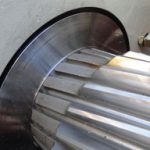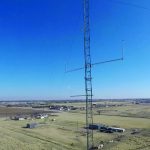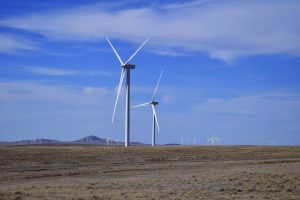This month we continue our conversation about safe practices for wind technicians. Inarguably, one of the more demanding tasks of a wind technician is to enter a rotor hub and perform any form of maintenance in this small space. An entirely uncomfortable position for the human body, working in such an area where leverage angles are odd, and where lifting of heavy components presents such a challenging and often difficult day’s work, it should be a highlighted area for owners and operators to emphasize improvement to maintenance practices. Some technicians I know will dread the thought of being assigned to a turbine that requires a replacement of the pitch linkage components, knowing there really is no better way to accomplish the task. Or, as other technicians may advise you, bring your Advil on the day you’re tasked to replace an accumulator, pitch actuators, or a main pitch motor. These and many other physically demanding uptower tasks are prospects for a continuous improvement program that strives to reduce or eliminate injurious conditions. Some ideas can be borrowed from other industries. For example, heavy hand tool positioning inventions and manipulators are common in many other industries, yet these innovations have yet to be found mainstream in the wind industry, particularly when it comes to working with components or hand tools uptower. Such devices provide special lift assistance when working with heavy materials and can nearly eliminate the physical lifting requirements of the job.
Hand injuries, although often minor, are a leading reported injury from wind technicians. Cuts, bruises, strains, impact stress, pinching, and crushing are all among the penalties of wind turbine maintenance. They can also be avoided. Following a near miss incident at a well-identified and labeled turbine pinch point, I asked a team of technicians to tell me how many of them had experienced such a close call themselves. As they all raised their hands—albeit with all fingers attached—I had to wonder if we had done all we could to address the potential of injury at this point. In the hierarchy of processes for eliminating hazards, engineering a design that completely removes the hazard tops the list, followed by installing guards and safety devices that keep personnel away from the hazard, and finally instituting work processes, labeling, training, and wearing PPE to protect the individual. In the case of this labeled pinch point, the manufacturer has clearly transferred responsibility for safety to the technician who is now required to ensure that their working environment is safe by avoiding injuries due to hazards inherent in the design. Here, it was much more feasible from a manufacturing perspective to install a label than it was to redesign the component or install a guard so that persons working on this turbine would ever be subject to an injury. It results in a critical opportunity for wind project operators to fully assess each situation and understand the fallibility of warning labels. Starting with the assumption that the hazard is real, these labels offer absolutely zero protection from an injury unless a process has been put in place to actually avoid them.
The wind industry presents a unique maintenance environment with special tasks in tight spaces at high elevations. Injuries will affect the profitability of a project by contributing to a loss of wind farm productivity, increasing days away from work and resulting in the possible retraining and hiring of new employees. In laying the groundwork for improving safety on the wind project, owners and operators should listen to those who work on the turbines every day. It is the technician who must don fall protection gear, climb out into the hub, move heavy components in tight areas, and work around electrical and mechanical equipment who is able to most accurately describe the existing work conditions on the turbine. Recording videos of these work processes is a simple idea that will help to identify areas for improvement, provide excellent material for safety training sessions, and also serve as instructional tools for new employees. The technician’s actions can be objectively observed and evaluated before and after a corrective process is implemented, and critical feedback can be gathered on which to build an improvement process.
If we look to make safety and health the top priority, then we should start by identifying and correcting current processes that contribute to fatigue and injuries, including redesign options if feasible. In aiming to improve the overall health and safety of our workforce, we should also embrace innovation and develop the best practices that help reduce the exposure to injurious conditions.

































